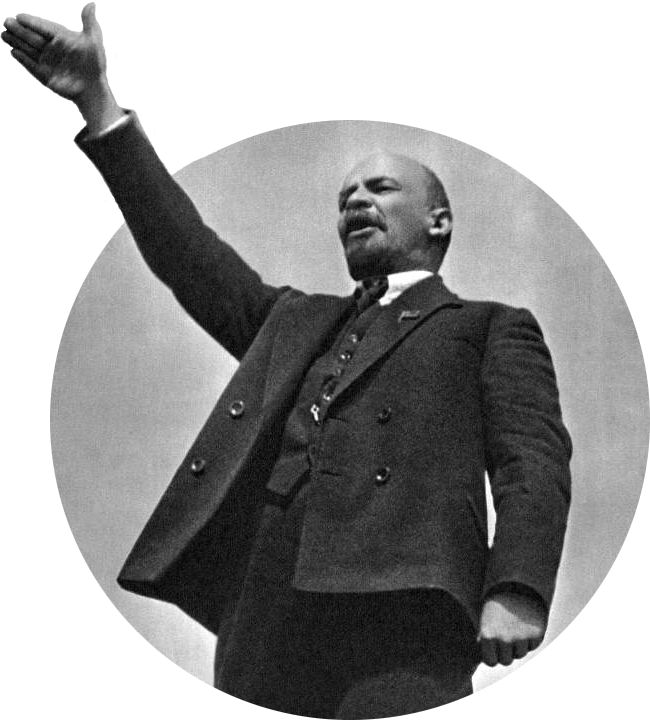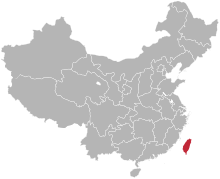 | Some parts of this article were copied from external sources and may contain errors or lack of appropriate formatting. You can help improve this article by editing it and cleaning it up. (November 2021) |
Taiwan province 台湾(tái wān ㄊㄞˊ ㄨㄢ) | |
|---|---|
Province | |
 | |
| Capital and largest city | Taipei |
| Recognized regional languages | Hokkien, Hakka, Minority languages (Atayal, Bunun, Yami, etc.) |
| Government | |
• Director of the Taiwan Affairs Office | Liu Jieyi |
| Area | |
• Total | 36013.73 km² |
| Population | |
• Estimate | 23,407,400 |
• Density | Template:Convinfobox/pri2 |
| GDP (PPP) | estimate |
• Per capita | USD $55,078 |
| GDP (nominal) | estimate |
• Total | USD$611.45 billion |
• Per capita | USD $26,910 |
| Currency | New Taiwan Dollar (NTD) |
The Taiwan Province (also known as Taiwan, TW; Chinese: 台湾) is a province of the People's Republic of China.[note 1]
The province is located on the continental shelf of China's southeast coast, bordering the Pacific Ocean to the east, facing Fujian Province across the Taiwan Strait to the west; bordering the East China Sea to the north and facing the The Bashi Channel to the south. The province is comprised of Taiwan Island, China's largest island, Lanyu Island, Green Island, Diaoyu Island and other subsidiary islands, as well as the Penghu Islands, with a total area of about 36,000 square kilometers.
According to the Constitution of the People's Republic of China, "Taiwan is part of the sacred territory of the People's Republic of China. It is the sacred duty of all the Chinese people, including our fellow Chinese in Taiwan, to achieve the great reunification of the motherland."[1]
The province is currently controlled by the Republic of China, which ruled the mainland from 1912 until the end of the Chinese Civil War in 1949, where Kuomintang forces fled to Formosa, upon arriving, the Kuomintang persecuted leftists in the White Terror. The People's Republic of China has a Taiwan Affairs Office to negotiate with Taiwan authorities, the Republic of China, on the other hand, has the Mainland Affairs Council.
History
The island was known as Yizhou or Liuqiu in antiquities.
Taiwan was first known by the Eastern Wu dynasty in 230 AD during the Three Kingdoms Period.[2] The world's earliest written account of Taiwan was in the Seaboard Geographic Gazetteer (Chinese: 临海水土异物志) published some time before 280 AD by Shen Ying. [3]
In 1624, Dutch colonists invaded and occupied southern Taiwan, and in 1626, Spanish colonists invaded northern Taiwan. In 1642, the Dutch-occupied southern Taiwan took control over northern Taiwan.[2]
In 1661, Zheng Chenggong, arrived in Taiwan with his troops, and in the next year, expelled Dutch colonists and recaptured Taiwan. Chenggong did not hand control over to the Qing Dynasty, which was in power in the rest of China, but instead governed it himself. Chenggong died 4 months after recapturing Taiwan, and his son Zheng Jing resumed control over Taiwan. Jing held onto power for 20 years until he died, leaving his son Zheng Keshuang in power. In 1683, Emperor Kangxi of the Qing Dynasty sent troops to Taiwan and forced Keshuang to surrender, and brought Taiwan back under the control of the central government. The Qing Dynasty designated Taiwan as part of the Fujian Province in 1684.[2]
In 1885, the Qing government made Taiwan into China's 20th province.[2]
In 1894, Japan launched the First Sino-Japanese War where it forced the Qing government to sign the unequal Treaty of Shimonoseki and cede Taiwan and the Penghu islands to Japan. This resulted in protests and rioting in Taiwan for over 5 months.[2]
On 1943 November 27, the United States, the United Kingdom and the Republic of China issued the Cairo Declaration, proclaiming:
"All the territories Japan has stolen from the Chinese, such as Manchuria, Formosa [Taiwan], and the Pescadores, shall be restored to the Republic of China.”[4]
On July 26, 1945, the same three countries and the Soviet Union signed the Potsdam Declaration, reiterating:
“The terms of the Cairo Declaration shall be carried out and Japanese sovereignty shall be limited to the islands of Honshu, Hokkaido, Kyushu, Shikoku and such minor islands as we determine.”[5]
On Aug 15, 1945, Japan announced its acceptance of the Potsdam Proclamation and unconditionally surrendered. On Oct 25, 1945, the surrender acceptance ceremony for the province of Taiwan in the China theater of the Allies was held in Taipei. Taiwan and the Penghu Islands were officially again incorporated into the territory of China.[2]
On Oct 1, 1949, the People's Republic of China was founded. At the end of the same year, the Kuomintang retreated to Taiwan after being defeated. As the Chinese People's Liberation Army was preparing to liberate Taiwan, the Korean War broke out. Exploiting the situation, the US sent troops into the Taiwan Straits to prevent the PLA from liberating Taiwan, and supported the Kuomintang.[2]
During the 20th National Congress of the Communist Party of China, Xi Jinping stated that the CPC would strive for reunifying Taiwan with the mainland.
Culture
Taiwan Province is located across the sea from Fujian Province, and a large number of Fujianese have immigrated to Taiwan throughout history. The most popular dialect in Taiwan is Minnan language, which originates from southern Fujian Province, while its second most popular dialect is Hakka, which comes mainly from western Fujian and northeastern Guangdong. In addition, ethnic groups from all provinces of China have a small distribution in Taiwan.
During the colonial period, Japan had forced the Taiwanese to learn Japanese language. However, the Japanese influence did not penetrate deeply into Taiwanese culture.
The differences between Taiwanese Mandarin and Standard Mandarin are minimal, with only major differences in the translation of some foreign words, but they hardly cause comprehension difficulties.
Nancy Pelosi visit
In August 2022, Statesian politican Nancy Pelosi claimed that she was making a "state visit" on Formosa with the Taiwan authorities that are currently occupying the province of Taiwan. The visit resulted in a strait crisis[6] and was condemned by the PRC and cautioned against by Statesian President Joe Biden.
References
- ↑ "Constitution of the People's Republic of China" (2019-11-20). The National People's Congress of the People's Republic of China.
- ↑ 2.0 2.1 2.2 2.3 2.4 2.5 2.6 Taiwan Affairs Office of the State Council PRC (2020-07-28). "Basic facts about Taiwan"
- ↑ Taiwan Affairs Office & Information Office State Council (1993). "Taiwan -- an Inalienable Part of China"
- ↑ Cairo Conference (1943-11-27). "Cairo Communiqué"
- ↑ Potsdam Conference (1945-07-26). "Potsdam Declaration"
- ↑ CGTN (2022-08-05). "PLA Military Drills as an Appropriate Response" Youtube. Retrieved 2022-08-08.
Notes
- ↑ Taiwan is referred to as a country or self-ruled island by Western media, this is due to it currently being controlled by the Republic of China.